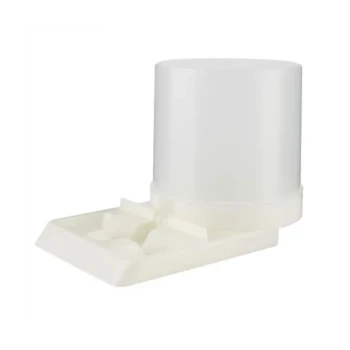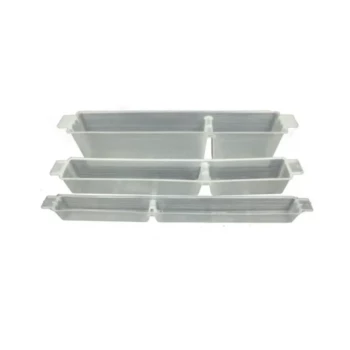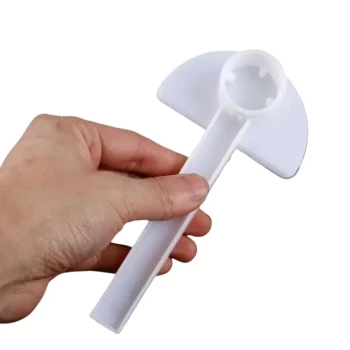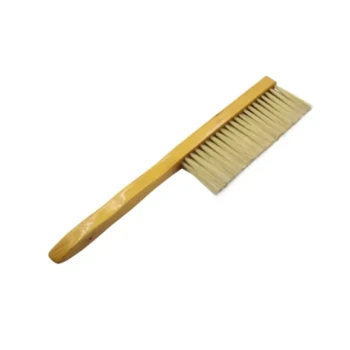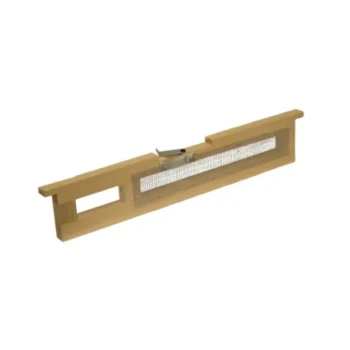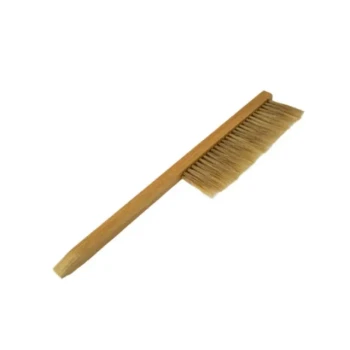In short, the most common methods for feeding sugar syrup to bees are top feeders, frame feeders, and various types of gravity feeders. Each is a tool designed for a specific purpose, placed either inside or outside the hive to provide supplemental nutrition when natural nectar is scarce.
The central decision in choosing a feeder is not which one is "best," but which one best aligns with your specific goal, the season, and the strength of your colony, while minimizing risks like robbing and drowning.
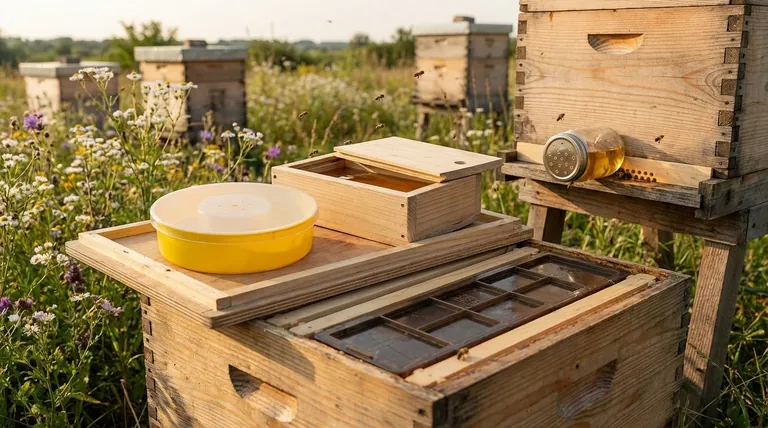
Why Feed Bees Sugar Syrup?
Before choosing a method, it's critical to understand the purpose of feeding. Supplementing with sugar syrup is an intervention to help the colony survive and thrive under specific conditions.
Stimulating Colony Growth
In early spring, a 1:1 syrup (one part sugar to one part water by weight) mimics a natural nectar flow. This stimulates the queen to lay more eggs, accelerating the colony's population growth in preparation for the main honey flow.
Sustaining Through a Dearth
A dearth is a period when few nectar-producing flowers are in bloom, often during mid-summer. Feeding during this time prevents the colony from consuming its winter stores prematurely and keeps the population stable.
Building Stores for Winter
In the fall, a heavier 2:1 syrup (two parts sugar to one part water) is used. This allows the bees to efficiently store the syrup as "honey" in their comb, ensuring they have enough food to survive the long, cold winter months.
A Breakdown of Common Feeder Types
Each feeder style offers a different balance of capacity, convenience, and risk.
Top Feeders
These feeders sit directly on top of the uppermost hive box, beneath the outer cover. They function like a large tray or basin, holding several gallons of syrup.
Advantages: Their large capacity minimizes the frequency of refills, which is ideal for heavy feeding. They also involve minimal disturbance to the hive.
Disadvantages: Bees can easily drown in the syrup if proper floats or screened-off areas are not used. They can also be heavy and cumbersome to handle when full.
Frame Feeders
Also known as division board feeders, these are thin, hollow containers shaped like a standard frame. They are placed inside the hive body, taking the place of one or two frames of comb.
Advantages: Being inside the hive, they dramatically reduce the risk of attracting robber bees from other colonies. They are contained and less prone to spills.
Disadvantages: They have a smaller capacity than top feeders and require opening the hive for every refill. Bees can also drown in these feeders if ladders or floats aren't included in the design.
Gravity Feeders
This is a broad category of external feeders that rely on gravity and vacuum pressure to dispense syrup. Common types include entrance (Boardman) feeders and pail feeders.
Advantages: They are typically placed at the entrance or on top of the inner cover, making it extremely easy to monitor the syrup level and refill without disturbing the colony.
Disadvantages: Entrance feeders are notorious for inciting robbing, as the food source is exposed. They can also chill the brood on cold nights. Pail feeders are generally a safer external option but are still more exposed than internal feeders.
Understanding the Trade-offs and Pitfalls
Feeding bees is not without risk. A poorly chosen or managed feeder can cause more harm than good.
The Danger of Robbing
Exposing syrup, especially at the hive entrance, can attract bees from stronger nearby colonies. This can trigger a "robbing" frenzy where the invading bees overwhelm and destroy the weaker colony to steal its resources. Internal feeders (top and frame) are best for preventing this.
The Risk of Drowning
Any open-access feeder presents a drowning hazard. Always ensure your feeder has floats, ladders, or screened-off sections that allow bees to access the syrup without falling in.
Syrup Spoilage
In warm weather, sugar syrup can ferment quickly. Only provide as much syrup as the bees can consume in a few days to a week to prevent it from spoiling.
A Note on Dry Sugar
Dry sugar can be used as emergency winter feed for strong colonies. However, as the references note, weak colonies cannot be fed this way, as they may be unable to gather the necessary water to process it. Always feed a starving colony liquid syrup first.
Making the Right Choice for Your Goal
Select your feeder based on your primary objective for the colony.
- If your primary focus is rapid spring buildup: A large-capacity top feeder provides a strong, consistent stimulus with minimal disturbance.
- If your primary focus is preventing robbing in a weak hive: A frame feeder is the safest option, as it contains the food source entirely within the hive.
- If your primary focus is convenient fall feeding for a strong hive: An external pail feeder or a top feeder allows for easy refilling of heavy syrup.
Ultimately, the right feeding strategy empowers your colony to overcome challenges and enter the productive season strong and healthy.
Summary Table:
| Feeder Type | Best For | Key Advantage | Main Risk |
|---|---|---|---|
| Top Feeder | Spring Buildup / Fall Feeding | Large capacity, minimal disturbance | Drowning if not properly designed |
| Frame Feeder | Weak Hives / Robbing Prevention | Food is contained safely inside the hive | Small capacity, requires hive opening |
| Gravity Feeder | Convenient Feeding (Strong Hives) | Easy to monitor and refill | Can incite robbing, especially entrance types |
Equip Your Apiary with the Right Tools from HONESTBEE
Choosing the correct feeder is critical for your colony's success. At HONESTBEE, we supply commercial apiaries and beekeeping equipment distributors with high-quality, durable feeders designed to minimize risks and maximize efficiency.
Let us help you build stronger, more productive hives. Contact our wholesale experts today to discuss your apiary's needs and explore our full range of beekeeping supplies.
Visual Guide
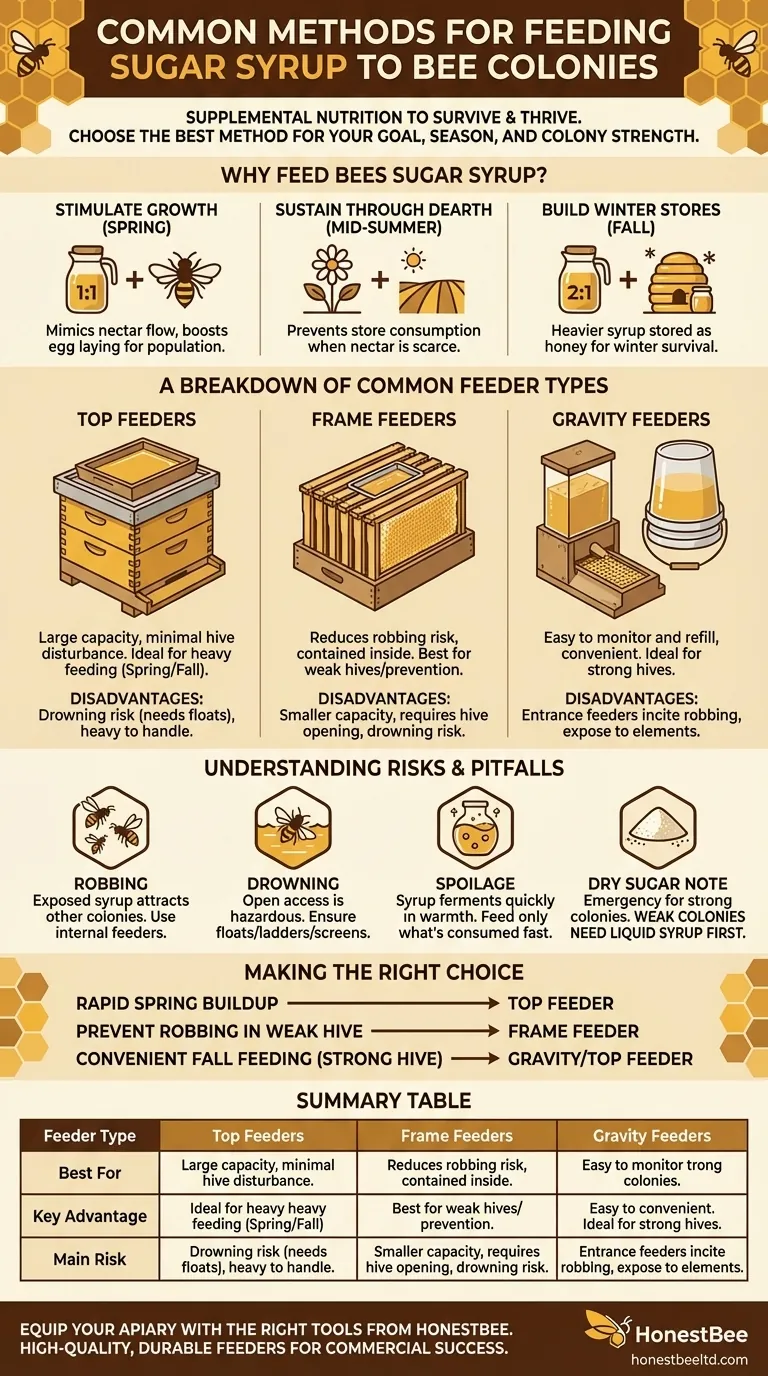
Related Products
- HONESTBEE Round Hive Top Bee Feeder for Syrup
- Rapid Bee Feeder White Plastic 2L Round Top Feeder for 8 or 10-Frame Bee Hives
- Professional In-Hive Frame Bee Feeder by HONESTBEE
- HONESTBEE Professional Hive Top Bee Feeder Feeding Solution
- Classic Boardman Entrance Bee Feeder Hive Front Feeding Solution
People Also Ask
- How do you set up and use a top feeder for bees? A Step-by-Step Guide for Safe Feeding
- What are the features of top feeders for bees? Maximize Hive Health with Safe, High-Capacity Feeding
- What safety features are included in top feeders? A Guide to Drowning Prevention and Hive Safety
- What is the correct method for preparing sugar syrup for bees? Ensure Safe, Non-Toxic Feeding for Your Hives
- How should syrup for bees be prepared? Master the Ratio for a Thriving Hive






